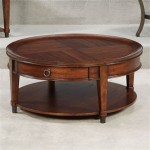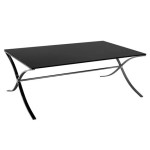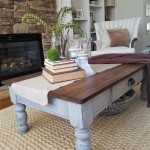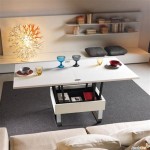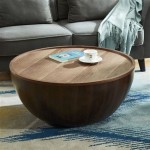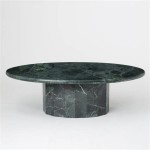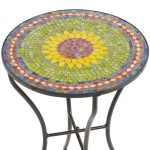How To Choose The Right Ornate Coffee Table For Your Living Room
Selecting an ornate coffee table for a living room involves considering various factors to ensure it complements the existing decor and fulfills functional needs. An ornate coffee table, characterized by its intricate details and embellishments, can serve as a focal point, elevating the aesthetic appeal of the space. However, a mismatch in style, size, or material can detract from the overall harmony of the room. Therefore, a systematic approach is crucial to making an informed decision.
Assessing the Room's Style and Aesthetics
Before embarking on the search for an ornate coffee table, an assessment of the living room's existing style and aesthetics is paramount. The coffee table should harmonize with the dominant design theme, whether it's traditional, contemporary, eclectic, or transitional. Ornate designs are often associated with traditional styles, such as Victorian, French Provincial, or Baroque, but modern interpretations can also incorporate ornate elements in a more minimalist or abstract manner.
If the living room features a traditional style, an ornate coffee table with carved details, cabriole legs, and a rich finish like mahogany or walnut would be a suitable choice. The table's design should echo the existing furniture's features, such as the curves and embellishments found on sofas, chairs, and side tables. Upholstery fabrics, wall colors, and rug patterns should also be considered to ensure a cohesive look. For example, if the sofa features floral upholstery, an ornate coffee table with floral carvings or a marble top could complement the room's overall design.
In a contemporary living room, incorporating an ornate coffee table might seem counterintuitive, but it can be achieved by selecting a piece with a modern twist on traditional ornamentation. This could involve a table with clean lines and a minimalist silhouette, but with subtle ornate details like geometric carvings or a metallic finish. A glass-topped table with an ornate metal base, for instance, can add a touch of elegance without overwhelming the space. The key is to balance the ornate elements with the room's overall modern aesthetic, ensuring the table doesn't appear out of place.
Eclectic living rooms offer the most flexibility in terms of design choices. An ornate coffee table can be a statement piece, adding character and personality to the space. The table's design can contrast with the existing furniture and decor, creating a visually interesting and dynamic environment. For example, a rustic living room with exposed brick and industrial-style furniture could be enhanced by an ornate coffee table with a distressed finish and intricate metalwork. The juxtaposition of styles can create a unique and captivating atmosphere.
Transitional living rooms, which blend traditional and contemporary elements, require a careful balance when selecting an ornate coffee table. The table should incorporate elements of both styles, such as a traditional design with a modern finish or a contemporary design with ornate details. A coffee table with clean lines and a simple silhouette, but adorned with elegant carvings or a decorative inlay, can seamlessly blend with the room's transitional aesthetic. The goal is to create a cohesive and harmonious space that reflects both traditional and modern sensibilities.
Beyond the overall style, the existing color palette should also be taken into account. The coffee table's finish and materials should complement the room's dominant colors and tones. A dark wood finish, such as mahogany or ebony, can add warmth and richness to a room with neutral colors, while a lighter finish, such as ivory or cream, can brighten up a darker space. Metallic accents, such as gold or silver, can add a touch of glamour and sophistication, but should be used sparingly to avoid overwhelming the room. The color of the table should harmonize with the surrounding furniture, rugs, and wall colors, creating a visually pleasing and balanced environment.
Considering Size, Shape, and Functionality
The size and shape of the coffee table are crucial factors that determine its functionality and impact on the living room's layout. A table that is too large can overwhelm the space, making it feel cramped and crowded, while a table that is too small can appear insignificant and fail to fulfill its intended purpose. The ideal size and shape of the coffee table should be proportional to the size of the room and the surrounding furniture.
As a general rule, the coffee table should be approximately two-thirds the length of the sofa. This allows for comfortable passage around the table and ensures that it doesn't visually overpower the seating area. The height of the coffee table should be similar to the height of the sofa cushions, typically between 16 and 20 inches. This makes it easy to reach for drinks, books, or other items placed on the table. The height can be adjusted slightly depending on the specific needs and preferences of the occupants.
The shape of the coffee table can also impact the room's flow and aesthetics. Rectangular coffee tables are a popular choice for larger living rooms, as they provide ample surface area and can accommodate multiple people. Round coffee tables are well-suited for smaller spaces, as they promote a sense of openness and facilitate conversation. Oval coffee tables offer a compromise between rectangular and round shapes, providing both functionality and visual appeal. Square coffee tables are ideal for square-shaped living rooms, as they create a sense of balance and symmetry. The choice of shape should be guided by the room's dimensions and the desired aesthetic.
Beyond size and shape, the functionality of the coffee table should also be considered. The table should serve its intended purpose, whether it's providing a surface for drinks and snacks, displaying decorative items, or offering storage space. If the coffee table is primarily used for entertaining, a larger surface area and ample seating around the table are essential. If the table is used for displaying decorative items, a glass top or a mirrored surface can enhance the visual appeal of the display. If storage is a priority, a coffee table with drawers, shelves, or a lift-top mechanism can provide valuable storage space for books, magazines, or remote controls.
Ornate coffee tables with intricate carvings, decorative inlays, or elaborate metalwork can add a touch of elegance and sophistication to the living room, but they can also be less practical than simpler designs. Intricate details can make it difficult to clean and maintain the table, and sharp edges or protruding elements can pose a safety hazard, especially for young children. When selecting an ornate coffee table, it's important to balance aesthetic appeal with practical considerations. The table should be both beautiful and functional, enhancing the living room's design without compromising its usability.
Evaluating Materials and Durability
The materials used in the construction of an ornate coffee table significantly impact its durability, appearance, and overall value. Common materials include wood, metal, glass, and stone, each with its own unique properties and aesthetic qualities. The choice of materials should be based on the desired style, level of maintenance, and budget.
Wood is a popular choice for ornate coffee tables due to its versatility, warmth, and natural beauty. Different types of wood offer different levels of durability and aesthetic appeal. Hardwoods, such as mahogany, walnut, and oak, are known for their strength, durability, and rich grain patterns. Softwoods, such as pine and cedar, are more affordable but less resistant to scratches and dents. The finish of the wood also plays a crucial role in its appearance and protection. A high-quality finish can enhance the wood's natural beauty and protect it from moisture, stains, and scratches.
Metal is another common material used in ornate coffee tables, particularly in the base or legs. Metal can add a touch of elegance, sophistication, and industrial chic to the design. Common metals used in coffee table construction include wrought iron, brass, stainless steel, and aluminum. Wrought iron is known for its strength, durability, and intricate designs. Brass adds a touch of warmth and luxury to the table, while stainless steel offers a sleek and modern look. Aluminum is lightweight and corrosion-resistant, making it a good choice for outdoor or high-humidity environments. The finish of the metal can also impact its appearance and durability. A powder-coated finish can protect the metal from scratches and rust, while a polished finish can enhance its shine and luster.
Glass is often used for the tabletop of ornate coffee tables, providing a sleek, modern, and easy-to-clean surface. Glass can be tempered or laminated for added safety and durability. Tempered glass is heat-treated to make it more resistant to breakage, while laminated glass consists of two or more layers of glass bonded together with a plastic interlayer. The thickness of the glass also affects its strength and durability. Thicker glass is more resistant to scratches and impacts. The edges of the glass should be smooth and polished to prevent injury. The integration of glass with ornate elements, such as a carved wooden base or a decorative metal frame, can create a visually striking and elegant piece of furniture.
Stone, such as marble, granite, or travertine, can add a touch of luxury and sophistication to an ornate coffee table. Stone is known for its durability, heat resistance, and unique veining patterns. Marble is a classic choice for coffee tables, adding a touch of elegance and timeless beauty. Granite is a more durable and stain-resistant option, ideal for high-traffic areas. Travertine offers a more rustic and textured look, suitable for casual or transitional living rooms. The finish of the stone should be sealed to protect it from stains and scratches. Regular cleaning and maintenance are essential to preserve the stone's beauty and longevity. A stone tabletop can be combined with an ornate wooden or metal base to create a stunning and durable coffee table.
When evaluating the materials of an ornate coffee table, it's essential to consider their durability and resistance to wear and tear. The table should be able to withstand daily use and resist scratches, stains, and dents. The construction of the table should be solid and sturdy, ensuring that it can support the weight of items placed on it. The materials should also be easy to clean and maintain, allowing the table to retain its beauty and value for years to come. Investing in a high-quality coffee table made from durable materials is a worthwhile investment that can enhance the living room's design and functionality for many years.

How To Choose A Coffee Table That Is Perfect For Your Living Room Huset

Coffee Table Styling And Decor Ideas For 2025 Jane At Home

How Choosing The Right Coffee Table Can Complete Your Living Room My Decorative

15 Designer Tips For Styling Your Coffee Table

Coffee Table Styling And Decor Ideas For 2025 Jane At Home

How To Choose The Right Size Coffee Table Happy Haute Home

Coffee Table Styling And Decor Ideas For 2025 Jane At Home

15 Designer Tips For Styling Your Coffee Table

Best Centre Tables For Living Room Add Functionality With A Touch Of Elegance To Your Space Hindustan Times

15 Stylish Coffee Table Decor Ideas For 2025
Related Posts

